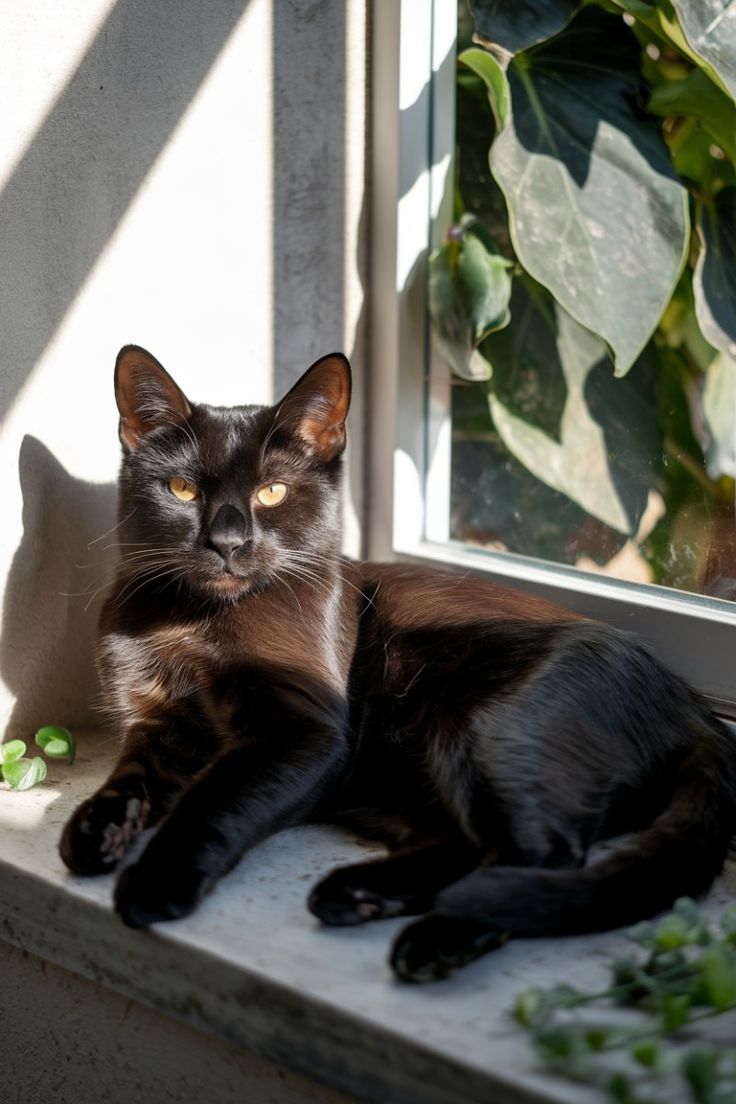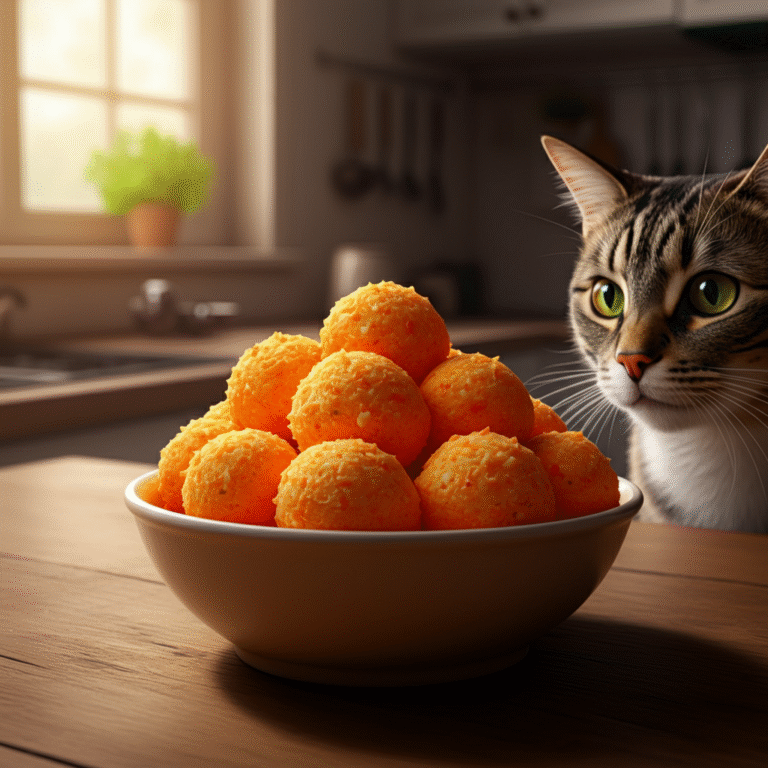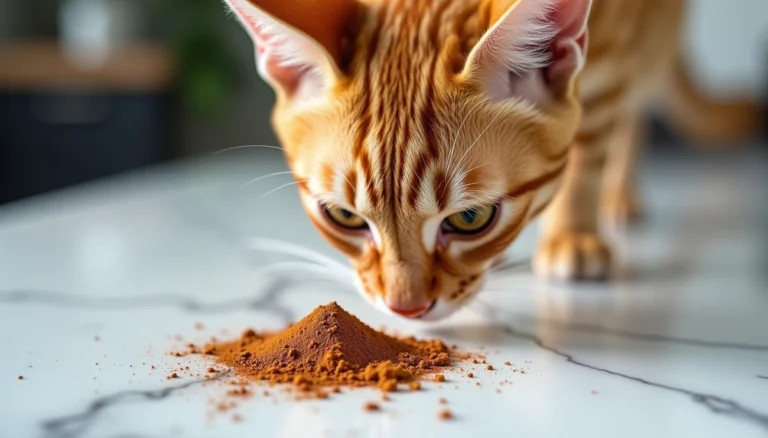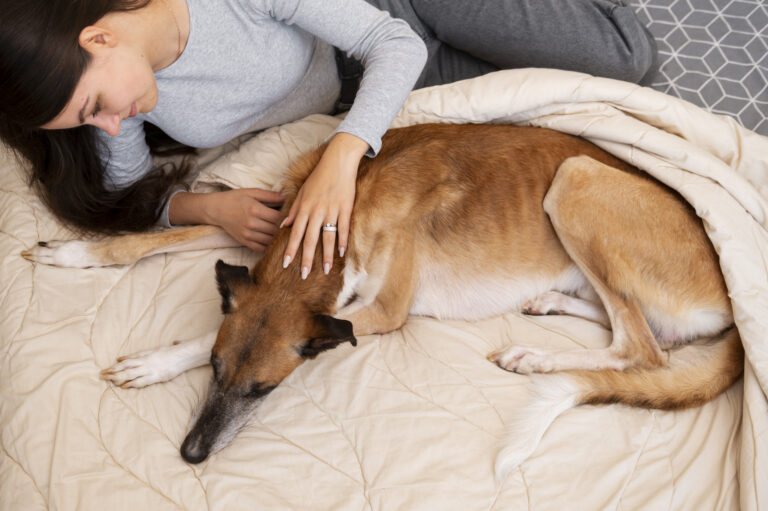Black Tabby Cat: 10 Fascinating Facts, Stunning Pictures & Care Guide
Melanistic tabby cats are hiding a fascinating secret beneath their dark coats – patterns that sometimes only reveal themselves in bright sunlight. Despite black being the most common feline color, these captivating cats often showcase hidden “ghost markings” that can appear as stripes, spots, or whorls.
Interestingly, tabby cats are characterized by their distinctive “M” shape on their foreheads, including black tabbies. We’ve discovered that these mysterious felines come in five distinctive patterns: Classic, Mackerel, Spotted, Ticked, and Patched. Their markings aren’t just beautiful – they serve a practical purpose, helping them blend into their territory to hide from prey. If you’re considering adding one of these magnificent cats to your family, you should know they can live between 15 and 20 years with proper care, though you’ll need to budget around $634 annually for their expenses. In this comprehensive guide, I’ll share everything you need to know about black tabby cat personality, care requirements, and the fascinating history behind these remarkable felines.
The Mysterious ‘M’ Marking on Black Tabby Cats
Image Source: Reddit
Look closely at any black tabby cat, and you’ll discover a distinctive “M” shape on their forehead. This universal marking appears in four distinct lines, making it the most recognizable feature of tabbies worldwide.
What makes this fact fascinating
The M marking isn’t random but results from specific genetic interactions, primarily the agouti gene. This fascinating feature forms naturally where facial stripes converge above the eyes, creating a memorable pattern that’s been captivating humans for centuries.
How it relates to black tabby cats
In black tabbies, the M remains visible albeit sometimes subtly. Interestingly, when sunlight hits a black tabby’s fur, this marking becomes more prominent. Although their dark coat may conceal other tabby patterns, the forehead M typically remains detectable.
Fun trivia or myth
Throughout history, various cultures have created legends explaining this mysterious mark:
- In ancient Egypt, it represented “Mau,” their word for cat
- Christian tradition suggests Mary marked a tabby that comforted baby Jesus
- Islamic legend claims Prophet Muhammad blessed his cat Muezza after it saved him from a snake
- Some believe it symbolizes the “mark of the moon”
Visual traits
The M appears across all tabby patterns but stands out most prominently in mackerel and classic varieties. Furthermore, even solid-colored cats may reveal faint M markings under certain lighting conditions since all domestic cats carry the tabby gene.
Breed examples
The Egyptian Mau, one of the oldest cat breeds, proudly displays this marking. However, contrary to popular belief, the M isn’t exclusive to Maine Coons but appears on all tabby cats.
Care implications
As cats age, the M marking might become less distinct, although this varies among individuals. Nonetheless, this genetic trait requires no special care beyond regular grooming.
Black Tabby Patterns: Classic, Mackerel, Spotted, and More
Image Source: Daily Paws
The world of tabby cats extends far beyond their iconic M-marking. Five distinct patterns exist in these felines, each with its own striking characteristics.
What makes this fact fascinating
Tabby isn’t a breed or color but a specific coat pattern that dominates domestic cats. The tabby gene is remarkably dominant, explaining why these patterns appear so frequently in cat populations. Even solid black cats often carry hidden tabby genes that occasionally reveal themselves.
How it relates to black tabby cats
Black tabbies display these patterns beneath their dark coats, sometimes visible only under specific lighting conditions. Generally, black tabbies have dark browns, olives, and ochres that stand out against their black backgrounds. Many “solid” black cats are actually black tabbies with concealed patterns called ghost markings that emerge in bright sunlight.
Fun trivia or myth
The word “tabby” originated from a type of silk made in Baghdad, not from cats themselves! Additionally, while the mackerel pattern is called “classic” in everyday language, cat geneticists consider the blotched pattern the true classic tabby.
Visual traits
Each pattern has distinct characteristics:
- Classic/Blotched: Features swirling patterns, bullseye-like markings on sides, and a “butterfly” design across shoulders
- Mackerel: Displays narrow vertical stripes resembling a fish skeleton
- Spotted: Shows broken stripes appearing as spots or dots
- Ticked: Creates a salt-and-pepper appearance through banded individual hairs
- Patched: Combines tabby patterns with patches of red or cream
Breed examples
Maine Coons frequently exhibit dramatic black tabby patterns, while American Shorthairs often display bold silver or black tabby markings. Egyptian and Arabian Maus commonly show the spotted tabby pattern.
Care implications
No special care requirements exist based solely on pattern type. Moreover, grooming needs remain consistent regardless of which tabby variation your cat displays.
The Baghdad Silk Connection: Origin of the Word ‘Tabby’
Image Source: Useless Etymology
The word “tabby” traveled an extraordinary linguistic journey before becoming associated with our beloved feline friends. Originally, the term referred to a luxurious striped silk fabric manufactured in Baghdad’s Al-‘Attābīya quarter during the Middle Ages.
What makes this fact fascinating
The linguistic evolution is remarkable – from Arabic “‘attābī” (named after the Baghdad district) to Medieval Latin “attabi,” then French “tabis,” finally entering English as “tabby” in the early 1600s. At first, English speakers used it exclusively for describing wavy-patterned silk taffeta.
How it relates to black tabby cats
Black tabbies, like other tabbies, received their name through this textile connection. People noticed the striking resemblance between the wavy patterns in this prestigious fabric and the distinctive markings on cats.
Fun trivia or myth
Curiously, it wasn’t until the 1690s that “tabby cat” became common terminology for striped felines. Even more intriguing, until the 1770s, English speakers rarely used just “tabby” alone for cats, preferring the full phrase “tabby cat”.
Visual traits
The rich watered silk featured irregular wavy finishes that resembled feline coat patterns.
Breed examples
Several ancient breeds traveled along the Silk Road, hence the connection between luxurious fabrics and these cats.
Care implications
No special care requirements stem from this historical naming origin.
Black Tabby Cats and Their Wild Ancestors
Image Source: Africa Geographic
The genetic lineage of your black tabby cat stretches back thousands of years to a specific wild ancestor – the African wildcat (Felis lybica). This unassuming desert dweller is the direct forebear of all domestic cats worldwide.
What makes this fact fascinating
Genetic research confirms domestic cats originated from Middle Eastern wildcats approximately 10,000 years ago in the Fertile Crescent region. Originally, these wildcats were drawn to early human settlements where grain storage attracted mice – perfect hunting grounds for these skilled predators.
How it relates to black tabby cats
Your black tabby’s distinctive markings are evolutionary remnants inherited directly from these wild ancestors. The mackerel pattern – narrow vertical stripes – is considered the “wild-type” pattern typically seen in African wildcats. Consequently, this explains why tabby patterns are genetically dominant in domestic cats.
Fun trivia or myth
Prior to domestication, certain wildcat groups were virtually indistinguishable from each other because they all shared similar tabby-like coat patterns. Interestingly, many “solid” black cats still carry hidden tabby genes that become visible in bright sunlight.
Visual traits
African wildcats possess sandy gray fur with faint tabby stripes or spots, more pronounced in humid areas and paler in drier regions. Their distinctive pinkish-orange ear tint helps distinguish them from other wildcats.
Breed examples
The Abyssinian cat most closely resembles the original wildcat coloration, particularly with its ticked pattern. Maine Coons, Norwegian Forest Cats, and Siberians often display strong tabby patterns reflecting their wild heritage.
Care implications
Understanding your black tabby’s wild ancestry explains their hunting instincts and behavioral traits. Their natural camouflage pattern once helped them hunt effectively in the wild – explaining why your domestic companion may still stalk toys with impressive precision.
Melanistic Black Tabby Cats: Hidden Stripes in the Sunlight
Image Source: Reddit
Did you know that most “solid” black cats aren’t truly solid at all? Many supposedly black cats are melanistic tabby cats with hidden patterns that reveal themselves under specific conditions.
What makes this fact fascinating
The genetic phenomenon called pseudomelanism or abundism causes tabby markings to become so dense they appear as solid black. In reality, most black cats carry the tabby gene but display a fascinating optical illusion—their patterns only emerge in bright sunlight.
How it relates to black tabby cats
Many black tabbies possess the agouti gene, which creates bands of color on individual hairs. As sunlight breaks down pigment over time, their hidden tabby markings become increasingly visible. Typically, these “ghost markings” appear first on tails, legs, or faces.
Fun trivia or myth
In scientific studies, melanistic coat coloration occurs as a common polymorphism in 11 of 37 felid species yet never achieves complete fixation. Surprisingly, researchers identified at least four independent genetic origins for melanism in the cat family.
Visual traits
Melanistic black tabbies may display several pattern types beneath their dark coats, including classic swirls, mackerel stripes, or spots. Indeed, some develop a “rust” in sunlight, causing their coat to turn brownish.
Breed examples
This phenomenon occurs across numerous breeds, including:
- Abyssinian
- Maine Coon
- Oriental Shorthair
- American Shorthair
Care implications
Sunlight exposure can gradually alter coat appearance, creating a red-brown “rusting” effect. This natural occurrence requires no special care unless accompanied by other unusual symptoms.
Black Tabby Cat Personality: Friendly, Curious, and Loyal
Image Source: Catster
Black tabby cat owners consistently report their feline companions display exceptionally engaging personalities that make them perfect family pets. These distinctive cats combine intelligence with affection in a uniquely charming package.
What makes this fact fascinating
Research shows black tabby cats typically develop strong bonds with their human families. Remarkably, they often form relationships with multiple family members rather than attaching exclusively to one person. Their intelligence allows them to quickly learn household routines and adapt to various living situations.
How it relates to black tabby cats
Beyond their striking appearance, black tabbies are known for being outgoing and sociable. Unlike outdated myths about black cats being standoffish, many owners describe their black tabbies as “chatty cuddlers” who actively seek human interaction. Their vocal communication extends beyond standard meows to include chirps, trills, and distinctive purrs.
Fun trivia or myth
In Japan, black cats symbolize economic success and true love rather than bad luck. Ancient Egyptian sailors often brought black cats aboard ships as good luck charms, believing they ensured safe voyages.
Visual traits
Their personality frequently manifests through distinctive body language:
- Head-bumping and leg-rubbing to show affection
- Playful pouncing that showcases their athletic abilities
- Attentive ear movements indicating their high alertness
Breed examples
Maine Coons with black tabby patterns often display especially playful personalities, whereas American Shorthair black tabbies tend toward steady temperaments.
Care implications
These social felines require regular interactive playtime and mental stimulation. Naturally, their high energy levels need appropriate outlets through toys and climbing structures. For optimal emotional well-being, black tabbies thrive with consistent attention and companionship.
Famous Black Tabby Cats in History and Pop Culture
Image Source: Entertainment Weekly
Throughout entertainment history, black tabby cats have stolen the spotlight, becoming iconic characters that shaped how we view these mysterious felines. From classic films to beloved TV shows, these charismatic cats have left indelible paw prints on pop culture.
What makes this fact fascinating
Black cats in entertainment have successfully challenged negative stereotypes, transforming from supposed symbols of misfortune into beloved characters. These media representations serve as “rabble mousers” and “kibble quakers,” breaking down superstitious barriers that once unfairly maligned dark-furred felines.
How it relates to black tabby cats
Many famous “black cats” in pop culture actually display subtle tabby markings that become visible in certain lighting, connecting them to the melanistic tabby heritage. These entertainment icons showcase the distinctive personalities frequently associated with tabby cats – intelligent, playful, and sometimes delightfully mischievous.
Fun trivia or myth
Salem from “Sabrina the Teenage Witch” was originally a teenage boy cursed to live as a cat for attempting to take over the world. Similarly, Thackery Binx in “Hocus Pocus” was a boy transformed into an immortal cat by three witches.
Visual traits
Famous entertainment tabbies typically feature the distinctive M-marking, albeit subtly visible against their dark fur. In bright studio lighting, their hidden tabby patterns sometimes become visible, mirroring the natural “ghost markings” phenomenon.
Breed examples
The trumpet-playing Scat Cat from “The Aristocats” represents the effortlessly cool jazz personality often attributed to black tabbies. Luna, the wise guardian cat from “Sailor Moon,” exemplifies the intelligent, advisory nature common in these cats.
Care implications
These pop culture icons remind us that black tabbies deserve appreciation rather than superstition. In Japan, black cats symbolize good fortune – a perspective worth adopting.
Black Tabby Cats in Different Breeds
Image Source: Daily Paws
The beauty of black tabby patterns transcends breed boundaries, appearing in numerous popular cat breeds worldwide. Essentially, this distinctive pattern occurs naturally across many feline lineages rather than being limited to specific breeds.
What makes this fact fascinating
Across the feline world, black tabby isn’t confined to any single breed but appears more prominently in certain breeds known for pattern diversity. Notably, what people often call “brown tabby” is genetically a black tabby cat.
How it relates to black tabby cats
The black tabby pattern represents the wild-type coat color pattern of African wild cats. These patterns appear differently depending on the breed’s genetic makeup, with some displaying more pronounced markings than others.
Fun trivia or myth
Ticked tabbies are considered the most uncommon tabby variation, making them relatively rare finds. Correspondingly, the Bengal breed features its own specific tabby patterns – rosetted (spotted) and marble (blotched) – resulting from hybridization with wild cats.
Visual traits
Five pattern varieties exist for black tabbies: classic (swirling), mackerel (striped), spotted, patched, and ticked. Maine Coons specifically showcase traditional black tabby patterns with warm brown swirls, sometimes called “bullseye” patterns.
Breed examples
Primarily, black tabby patterns appear in:
- Maine Coon: Featuring dramatic, bold tabby markings
- American Shorthair: Known for silver and black classic tabby coats
- British Shorthair: Offering various tabby designs
- Bengal: Showcasing dark spotting or marbling
Care implications
Care requirements remain consistent regardless of which breed displays the tabby pattern. Practically speaking, their genetic makeup doesn’t necessitate special treatment beyond standard care for their respective breeds.
The Role of Genetics in Black Tabby Coat Patterns
Image Source: The Little Carnivore
The genetic tapestry behind black tabby coat patterns reveals a fascinating interplay of dominant and recessive genes that create these distinctive feline markings.
What makes this fact fascinating
The remarkable Agouti gene controls whether a cat displays tabby patterns at all. This gene creates alternating color bands on individual hairs, forming the tabby’s signature look. Cats need only inherit one dominant A allele to show tabby patterns, explaining their overwhelming prevalence.
How it relates to black tabby cats
For black tabbies, two key genetic elements interact: the tabby pattern gene and black pigmentation. The dominant B allele produces eumelanin (black pigment), which, alongside the Agouti gene, creates a black tabby. Nevertheless, in some cats, dense pigmentation may obscure the pattern entirely.
Fun trivia or myth
Interestingly, all domestic cats carry tabby genetics somewhere in their DNA. Even solid black cats often reveal “ghost tabby markings” in bright sunlight—nature’s secret signature hidden beneath the darkness.
Visual traits
Tabby patterns themselves have distinct genetic origins:
- Mackerel (dominant TaM): tiger-like stripes
- Classic/Blotched (recessive tab): swirls and bullseye patterns
- Spotted: broken stripes appearing as dots
- Ticked: individual hairs with multiple color bands
Breed examples
Maine Coons, American Shorthairs, and Oriental Shorthairs frequently showcase dramatic black tabby patterns.
Care implications
Overall, a cat’s genetic makeup requires no special care based on pattern alone.
How to Care for a Black Tabby Cat: Grooming, Diet, and Health
Image Source: Adventure Den
Caring for your black tabby requires specific approaches to maintain their health and distinctive coat. I’ve found these cats need thoughtful attention in several key areas.
What makes this fact fascinating
Black tabbies possess unique coat characteristics requiring special maintenance. Their fur can develop a reddish-brown “rusting” effect due to prolonged sun exposure or tyrosine deficiency. Additionally, approximately 50% of cats seen at veterinary clinics are overweight or obese.
How it relates to black tabby cats
Regular grooming prevents the “rusting” phenomenon common in black-coated cats. Subsequently, a high-quality diet rich in tyrosine helps maintain their deep pigmentation. Brush your black tabby at least once weekly to manage shedding and prevent hairballs.
Fun trivia or myth
Hyperthyroidism frequently affects middle-aged and older tabby cats, often causing metabolic changes. Initially, many owners mistake these symptoms for normal aging.
Visual traits
Black tabbies may develop coat color changes, particularly with aging or nutritional deficiencies.
Breed examples
Maine Coons with black tabby patterns typically require more extensive grooming due to their longer fur.
Care implications
For optimal health:
- Provide protein-rich food with essential fatty acids
- Schedule regular veterinary check-ups to monitor for hyperthyroidism
- Limit sun exposure to prevent coat “rusting”
- Engage in daily play to prevent obesity
- Use metal combs for effective grooming
Comparison Table
| Topic/Feature | Key Characteristics | Historical/Cultural Significance | Notable Facts | Care/Practical Implications |
|---|---|---|---|---|
| M Marking | Distinctive four-line pattern on forehead | Connected to Egyptian, Christian, and Islamic legends | Result of specific genetic interactions with agouti gene | No special care required; may become less distinct with age |
| Tabby Patterns | Five types: Classic, Mackerel, Spotted, Ticked, Patched | Dominant genetic trait in domestic cats | Patterns may be visible only under specific lighting in black tabbies | No special care requirements based on pattern type |
| Baghdad Silk Connection | Named after Al-‘Attābīya quarter in Baghdad | Evolved from Arabic “‘attābī” to English “tabby” | Term wasn’t used for cats until 1690s | N/A |
| Wild Ancestors | Descended from African wildcat (Felis lybica) | Domestication occurred ~10,000 years ago in Fertile Crescent | Mackerel pattern is the original “wild-type” pattern | Explains hunting instincts and behavioral traits |
| Melanistic Features | Hidden patterns visible in sunlight | Four independent genetic origins for melanism in cats | Shows “ghost markings” first on tails, legs, or faces | May develop “rusting” effect in sunlight |
| Personality Traits | Friendly, curious, loyal, and social | Considered good luck in Japanese culture | Form strong bonds with multiple family members | Requires regular interactive playtime and mental stimulation |
| Pop Culture Presence | Featured in various media | Helped challenge negative stereotypes | Many famous “black cats” actually show tabby markings | Deserves appreciation rather than superstition |
| Breed Variations | Appears across numerous cat breeds | Represents wild-type coat color pattern | Ticked tabbies are the most uncommon variation | Care requirements vary by specific breed |
| Genetic Factors | Controlled by Agouti gene and tabby pattern genes | Present in all domestic cats’ DNA | Creates alternating color bands on individual hairs | No special care needed based on genetics alone |
| Care Requirements | Regular grooming needed | N/A | 50% of cats at vet clinics are overweight | Needs protein-rich food, regular vet checks, limited sun exposure |
Conclusion
Black tabby cats truly stand among the most fascinating felines in the domestic cat world. Throughout this guide, we’ve explored their mysterious M markings, five distinctive tabby patterns, and the surprising Baghdad silk connection behind their name. These remarkable cats carry the genetic legacy of their African wildcat ancestors while showcasing melanistic features that create those captivating “ghost markings” visible in sunlight.
Your black tabby likely possesses the friendly, curious, and loyal personality traits that make these cats such beloved companions. Many famous black cats in pop culture actually display subtle tabby markings, helping challenge unfair superstitions that once surrounded dark-furred felines.
Regardless of which breed your black tabby belongs to, their distinctive coat patterns stem from specific genetic interactions, particularly the dominant agouti gene. Proper care for these special cats includes regular grooming to prevent “rusting,” a protein-rich diet to maintain coat color, and plenty of interactive play to satisfy their intelligent minds.
Black tabby cats offer the perfect blend of mystery and affection, combining striking looks with engaging personalities. Their hidden patterns and rich history make them especially intriguing companions. After learning about their unique traits and care requirements, you’ll undoubtedly appreciate the special feline friend sharing your home even more. These remarkable cats deserve our admiration not just for their beautiful appearances but also for the joy and companionship they bring to our lives every day.
FAQs
Q1. What are the typical personality traits of a black tabby cat? Black tabby cats are known for being friendly, curious, and loyal. They often form strong bonds with multiple family members, are quite social, and enjoy interactive playtime. Many owners describe them as “chatty cuddlers” who actively seek human interaction.
Q2. Are black tabby cats considered rare? Black tabby cats are not particularly rare. In fact, many cats that appear solid black actually have hidden tabby patterns that can become visible in bright sunlight. The tabby pattern is one of the most common coat patterns in domestic cats.
Q3. What are some common health concerns for black tabby cats? Common health issues for tabby cats, including black tabbies, can include hyperthyroidism, urinary tract problems, and obesity. Regular veterinary check-ups are important to monitor for these conditions. With proper care, tabby cats can have a life expectancy of 15 years or more.
Q4. How should I care for my black tabby cat’s coat? Regular grooming is essential for black tabby cats. Brush your cat at least once a week to manage shedding and prevent hairballs. Be aware that their coat may develop a reddish-brown “rusting” effect due to sun exposure, so limiting time in direct sunlight can help maintain their deep black color.
Q5. What kind of diet is best for a black tabby cat? A high-quality, protein-rich diet is ideal for black tabby cats. Look for foods that contain essential fatty acids and adequate tyrosine, an amino acid that helps maintain their coat color. Proper nutrition, along with portion control, is crucial in preventing obesity, a common issue in domestic cats.







One Comment